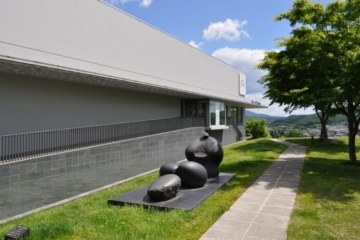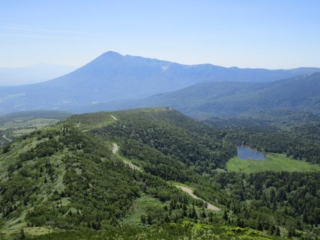MODEL COURSE
Morioka Station
 10 minutes
10 minutes
Daijiji Temple
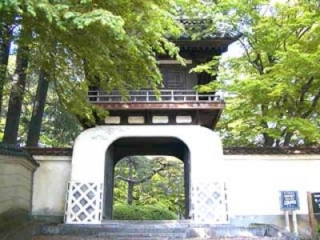
Daijiji Temple, also known as Hara Takashi's family temple, was built in 1673 with a rare Chinese-style temple gate. The hall was destroyed in a fire in 1899, but the Sanmon gate and the warehouse were rebuilt thanks to Takashi Hara's generosity.
Detailed Destination Information 2 minutes
2 minutes
Seiryu water
 5 minutes
5 minutes
Morioka Machiya Story Museum
The sake brewery of the "Former Iwategawa Nataya-cho Factory", where sake was brewed until 2006, was renovated and opened as "Morioka Machiya Monogatari-kan".
Of the four buildings, "Hamato's Sake Brewery" offers visitors a look at the history of the brewery and a video recording of the Showa period. In the "Gashiya" (the space under the eaves between the warehouses), visitors can view exhibits of valuable materials from the old Iwate River, and in the "Main House" there is a general information desk and community space where sightseeing information, art exhibitions, various lectures, and other events are held.
The Taisho-gura, a sake brewery built in the Taisho era, has a "Toki-no Shotengai" on the first floor that sells Morioka's specialties and crafts, gelato, and a coffee shop, while the "Toki-no Exhibition Room" on the second floor is a gallery that regularly holds special exhibitions of art works from Morioka's collection.
 5 minutes
5 minutes
Sakemachi Shopping Street
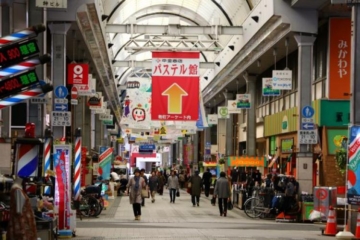
Located on the east side of the city center, Morioka's only shopping street with a canopy arcade. There are a wide variety of shops lined up, and you can enjoy shopping without worrying about rain, wind, or snow.
Detailed Destination Information 3 minutes
3 minutes
Morioka Takuboku/Kenji Seishunkan

The Morioka Takuboku and Kenji Youth Museum is located in the former Dai Kuju Bank, which was completed in 1908, and introduces the town of Morioka where Takuboku Ishikawa and Kenji Miyazawa grew up and their youth.
Designated as a National Important Cultural Property on July 6, 2004
 2 minutes
2 minutes
Iwate Bank Red Brick Building

It opened as Iwate Bank Red Brick Building on Sunday, July 17, 2016. Built to the design of Kingo Tatsuno and Manji Kasai Architects, the former Morioka Bank is built of red brick with a green dome, and its exterior has a strict Renaissance-style outline. Located in the center of the city, it combines with the Nakatsu River and Nakano Bridge to form Morioka's representative landscape. A nationally designated important cultural property built in 1909.
Detailed Destination Information 2 minutes
2 minutes
Goza nine
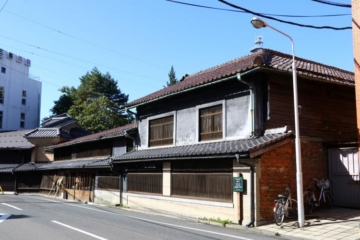
Gozaku, which still retains the image of a wealthy merchant, was a merchant house that sold lanterns for lanterns and straw crafts from the late Edo period to the Meiji period. The buildings, which have castle walls, tiles, and low eaves with lattice doors, have been built one after another, and you can get a glimpse of each era.
Detailed Destination Information 1 minute
1 minute
Konyamachi Banya

The remains of the fire station, which was built in 1913 (Taisho 2) and is a Morioka city landscape important building. After undergoing earthquake-proofing and renovation work, it reopened as a new exchange experience facility in March 2022 (Reiwa 4). There is a cafe and miscellaneous goods sales on the first floor, and a weaving workshop on the second floor, where you can also experience it by making a reservation. You can relax in a restaurant that exudes Taisho romance.
Detailed Destination Information 5 minutes
5 minutes
upper bridge fake jewel

The bridge above was built by Toshinao, the lord of the Nanbu domain, over the Nakatsugawa River at the same time as he built Morioka Castle. Of the bronze imitation jewels decorating the railing, eight have inscriptions dated to 1609 (Keicho 14), and 10 have inscriptions dated to 1611 (1611). It is extremely rare that so many remain, and in 1945 it was designated as a nationally important art object.
Detailed Destination Information 4 minutes
4 minutes
Shotaro Hirano Store
 7 minutes
7 minutes
Mitsuishi Shrine
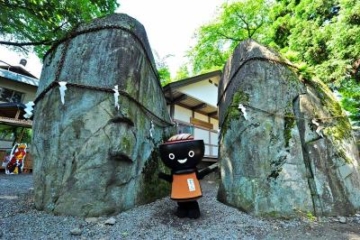
Behind Token-ji Temple, there is Mitsuishi Shrine, which is made up of three huge granite stones, and there is a legend of a demon's handprint on these three stones, which is said to be the origin of the name Iwate. It is also the legendary birthplace of the Sansa dance.
Detailed Destination Information 6 minutes
6 minutes
Hoonji Temple/Gohyaku Rahats
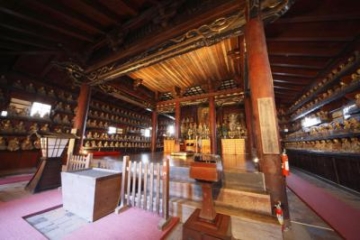
An ancient temple of the Soto sect, the principal image is Shaka Nyorai. The Arhat statue housed in Arhat Hall was created by nine Buddhist sculptors in Kyoto over a period of four years starting in 1731. All are made of marquetry and lacquered, and some of the statues include Marco Polo and Kublai. A cultural property designated by Morioka City.
Detailed Destination Information 10 minutes
10 minutes
Morioka Station






